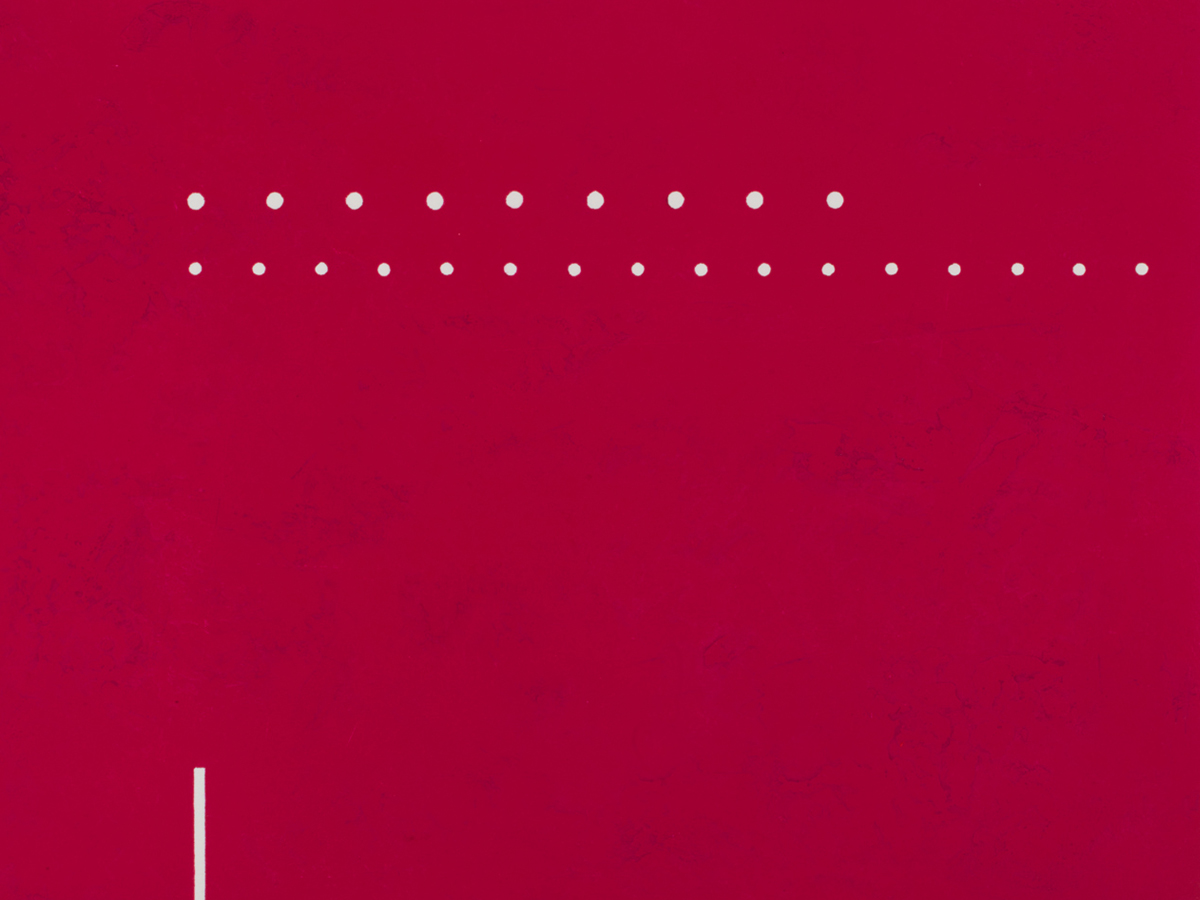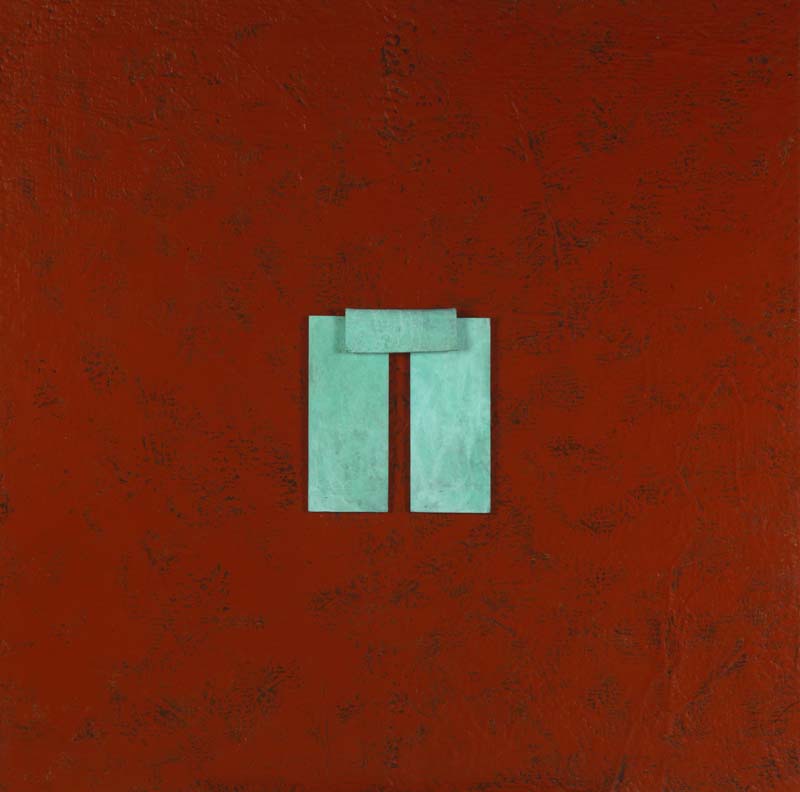Donation of works by David de Almeida

David de Almeida (São Pedro do Sul, 1945 – Lisbon, 2014) is regarded as an innovative artist in the area of printmaking, whose constant experimentation with the refinement of techniques made him one of the greatest Portuguese artists in this field, highly influential in art education and among printmaking artists in Portugal and abroad.
His printmaking work is both tactile and visual, originating in the world of senses, often focused on seeking a certain primitivism in the use of colour and line. The reliefs and counter-reliefs, the incidence of tones, the line and form are stripped down to their visual essence.
David de Almeida worked intensively and prolifically on painted works in which he combined techniques and materials such as collage, paper paste, hessian (reminiscent of arte povera), fabrics and small objects, plant fibres and limestone gel, as well as works in iron and copper that he also used for painting and sculptural objects. This use of matter made him more of an artist-maker, an artist-artisan, stemming from a relationship with the materials and the natural elements, earth and fire.
His works refer to pre-history, but also to the East (he lived in Macau) and Africa. The prints he made in Morocco, for example, where he travelled countless times, spending long periods living between Lisbon and Medina, are marked by ‘white’ and by their texture, as well as by the passage of time. Portugal’s expansion into the world and a fascination with anthropology, in an attempt to give meaning to the ‘other,’ are some of the themes with which David de Almeida worked. It was António Dacosta who introduced this young artist, who also had links to the Azores, in Angra do Heroísmo.
Regarded as one of the most important contemporary Portuguese printmakers, David de Almeida also experimented with painting and sculpture over the course of his career. Thanks to the donation of thirty works to the CAM, some of these pieces have now enhanced the artist’s representation in the collection, which comprises 15 works, from between 1989 and 2005, including collage, painting (various techniques), relief, sculpture and object, and 15 prints dated between 1976 and 2011, using various printing techniques.









The works donated to the CAM collection cover the full spectrum of David de Almeida’s work. The artist received several grants from the Gulbenkian Foundation: in 1977-79 he studied traditional techniques of engraving on metal; in 1982, he devoted himself to studying paper manufactured in the Auvergne region (the paper mills of Val de Lagat, in France), specialising in handmade paper. In 1984 and 1987, he carried out various artistic research projects. The Gulbenkian Foundation devoted a solo exhibition to him in 1981.
Along with the donation to the Art Library — a series of documents including manuscripts, notebooks/diaries with notes, drawings, collages, correspondence, press cuttings, photographs and negatives of works and models of works of public art — this significant group, part of which can be seen in the exhibition David de Almeida Collection, in the Art Library atrium until 11 December, gives us a comprehensive view of this artist’s work.
In terms of the works donated to the CAM, it is worth highlighting the extensive exploration of two particular printmaking techniques: cast paper and stone paste.
In his cast paper pieces, he gave the prints a three-dimensional aspect, hence his reputation as a printmaker-sculptor, and introduced a new and surprising material-based language.
In the early 1990s, he developed his own technique — stone paste — which made him a true pioneer and which he explored further in the series ‘Gravura antes da gravura’ (Printmaking before printmaking, 1995) and described in Gravura, outra: Manual de gravura com pasta de pedra (Printmaking, other: Manual for printmaking with stone paste, available in the Art Library). The donation included five excellent works using this technique.
In 1980, David de Almeida received the Gulbenkian Foundation’s National Printmaking Award. Some of the winning works belong to the collection: História de uma visita à pedra de Dighton (Story of a Visit to Dighton Rock, 1976), Auto-retrato (Self-Portrait, 1977), Vem aí o encoberto (Here Comes the Veil of Clouds, 1977), Souk (1978), Untitled (1978), Cais (Quay, 1979) and Arzila (Asilah,1982).
He started to show his work in solo and group exhibitions in the early 1970s and became a regular exhibition participant from 1981. The most recent retrospectives of his work were shown at Galveias Palace: David de Almeida: Exposição antológica (David de Almeida: Survey Exhibition), in 2010, and in the Biblioteca Nacional, David de Almeida, a ética da mão (David de Almeida, the ethics of the hand), in 2014. He created various artist books in collaboration with writers including Sophia de Mello Breyner (in 1991), Manuel Alegre (in 1991) and José Saramago (in 2004).
He received various prizes that enhanced his national and international reputation, including the Gold Medal from the Association of Spanish Printmakers (1977), the National Printmaking Award (1980), the Acquisition Prize at the 3rd Exhibition of Visual Arts at the Calouste Gulbenkian Foundation (1986), the Painting Prize at the Baghdad International Biennial (1987), the National Printmaking Prize – Museo del Grabado Español Contemporáneo (1999) and the Jesús Núñez International Graphic Art Prize – Betanzos – A Coruña (2006). In 1997, he was made Commander of the Order of Prince Henry.
He also carried out various urban interventions, in Portugal and abroad: the Hotel Ritz, in Lisbon; the World Trade Centre, Macau; Cabo Ruivo Station in the Lisbon Metro; the VIP Terminal of Ilha do Sal Airport, in Cape Verde; and Conceição Station, in the São Paulo Metro, Brazil.
Patrícia Rosas
Curator at the CAM